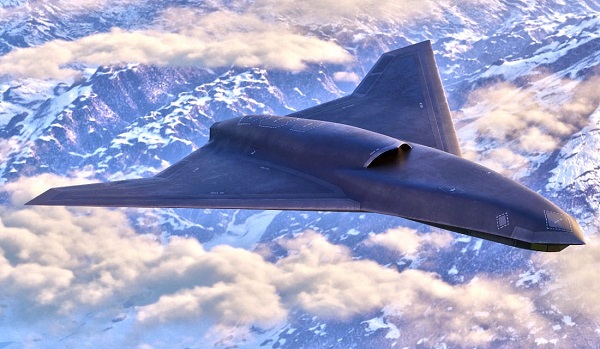International
Nigeria, 3 other African countries are deadliest for Christians: report

From LifeSiteNews
By Angeline Tan
The 2025 Global Christian Relief Red List report has found that the deadliest region for Christians is Africa, with Nigeria taking the top spot with 10,000 deaths in 2 years.
The 2025 Global Christian Relief (GCR) Red List report, which highlighted “the 25 worst countries for Christian persecution across five categories of concern” including killings, building attacks, arrests, displacements, abductions and assaults, has found that Africa, in particular Nigeria, is the most dangerous region for Christians.
Released in January, the GCR report, which relied on data from the Violent Incidents Database, a project founded by the International Institute for Religious Freedom (IIRF), summarized:
Africa remains the deadliest region for Christians, with Nigeria consistently being the most dangerous country for followers of Jesus. Between November 2022 and November 2024, nearly 10,000 Christians were killed, primarily by Islamic extremist groups such as Boko Haram, Armed Fulani Herdsmen, and the Islamic State’s West Africa Province (ISWAP). Similar patterns emerge in the Democratic Republic of the Congo (DRC), Mozambique, and Ethiopia, where numerous armed militant groups target Christians.
The GCR report detailed how “most of the killings” in Nigeria happened in the country’s northern “sharia” states, where Christians “often live in remote villages in semi-arid landscapes, making them particularly vulnerable to attacks.” Notably, the same report highlighted the failure of the Nigerian government in stopping these anti-Christian attacks, stating that “despite government assurances that they will defeat the extremists, the violence continues to escalate.”
Ranking second to Nigeria as the next “deadliest country for Christians” was the Democratic Republic of Congo (DRC), where “390 Christians were recorded as killed” during the reporting period of November 2022 to 2024. The GRC report singled out “Islamic militant groups like the Allied Democratic Forces” as the “main killers.”
Coming in third was Mozambique, with “262 recorded deaths.” The report declared that although Mozambique was “once a relatively peaceful Christian-majority country,” “a swarm of militants led by the Islamic State Mozambique (ISM)” has disrupted the peace of the country.
Strikingly, Ethiopia emerged as the fourth deadliest country for Christians, “with at least 181 Christians killed.” The GCR report detailed how “believers — particularly converts — faced high risks of violence in regions dominated by Islamic militants”.
Apart from killings, African Christians have to contend with the risk of displacements, assaults, and kidnappings.
“Despite the intense challenges in places like Nigeria, China, and India, we continue to see remarkable resilience in these communities,” Brian Orme, acting chief executive of Global Christian Relief, declared. “Even in the darkest circumstances, the Church not only survives but grows stronger — millions are choosing to follow Jesus despite knowing the risks they face.”
“Working closely with our partners on the ground in these high-risk areas, we provide emergency aid, safe houses, and trauma counseling to Christians facing violent persecution,” Orme said.
Regarding attacks on Christian property, India, a country noted for its controversial anti-conversion laws, ranked top on the list in the GCR report, with 4,949 incidents during the November 2022-2024 reporting period.
According to the report, “much of the violence occurred in Manipur, where unrest erupted in May 2024. Rioters, driven by Hindu extremists from the Meitei tribe, attacked predominantly Christian Kukis, systematically burning churches and setting fire to the homes of believers.”
Meanwhile, China led the world in arrests of Christians, with more than 1,500 believers detained under the communist government’s religious prohibitions. The report stated:
It is no surprise that China tops the 2025 GCR Red List for Arrests, given that the communist nation has the world’s most sophisticated surveillance mechanisms.
armed forces
Secretive Lockheed Martin Skunk Works reveals latest high-tech military drone

 THE MAKICHUK REPORT
THE MAKICHUK REPORT
Unmanned Vectis to ride shotgun with next-gen fighters
When Lockheed Martin’s super secret Skunk Works© advanced development arm unveils a new project, the aviation world stops and listens.
As always, it is very hush-hush, and, quite often, groundbreaking.
This week’s announcement didn’t disappoint.
It’s called “Vectis” — a stealthy autonomous drone that Lockheed intends to fly by the end of 2027.
As with most Skunk Works projects, officials declined to comment on certain aspects of the aircraft’s design, such as its engine or top speed, though it was noted that Lockheed’s analysis “doesn’t point toward supersonic [speeds]” as a requirement.
What do we know about it, aside from it’s very cool, futuristic design?
The first Vectis prototype is currently “in progress,” and is envisioned as a large “Category 5” reusable drone designed to be customizable to match shifts in the threat environment, said OJ Sanchez, Skunk Works’s vice president and general manager.
“Vectis provides best-in-class survivability at the CCA [Collaborative Combat Aircraft] price point,” Sanchez told reporters ahead of the Air Force Association’s Air Space and Cyber conference in Washington, D.C. “Prototype parts are ordered, the team is in work, and we intend to fly in the next two years.”
According to Breaking Defense, Lockheed sees the range, endurance and flexibility of Vectis’s design as key to its appeal.
It is being developed for the US and international markets based on feedback from multiple customers about the future battlefield.
One has to only look at the Russia-Ukraine conflict, to see that things have changed.
Vectis can carry out mission sets ranging from air-to-air, air-to-ground and ISR, and has an open systems architecture allowing it to interface with platforms and mission systems not built by Lockheed Martin, Breaking Defense, reported.
Certain aspects of the drone — such as which payloads it can carry, or whether it is optimized for regular operations or used less frequently on deployments — can be fine-tuned to meet a customer’s specific requirements.
For instance, “we will have built into it the ability for it to be a daily flyer, reliably work alongside its crew teammates, to be able to integrate into operations for training, as well as for deployment,” Sanchez said.
“At the same time, if the requirement is ease of storage and ease of assembly, it’s absolutely built into the design. … That’s where we’ll work closely to listen with any individual customers and go from there on their operations choice, but the flexibility is built in.”
With the lessons of Ukraine in mind, Vectis is designed to be maintainable in a deployed environment, with a simple design made of “and durable, reliable materials” and easy access to the aircraft’s internal systems if repairs need to be made.
While it has not flown, Lockheed has conducted operational analysis and simulations that paired the drone with the F-22 and F-35, with Sanchez noting that its low-observable signature and communications gear are “compatible” with fifth- and sixth-generation aircraft.
It was also informed by previous experience designing tailless aircraft like the X-44 MANTA, Lockheed’s sixth-generation fighter prototype for the Air Force’s Next Generational Air Dominance program, Sanchez said.
“We’re building in that kind of autonomy, that flexible autonomy, if you will, so that we can work with more countries, more partners, to really listen to what their needs are,” he said.
“That flexibility has been demonstrated through multiple demonstrations. Now we’ll go out and build it, and we’ll work to prove in the open air.”
In the U.S. military’s parlance, Group 5 uncrewed aerial systems are the largest and most capable, covering anything pilotless with a maximum takeoff weight of 1,320 pounds or more, and that can fly at altitudes of 18,000 feet or higher.
When asked, Sanchez declined to offer any hard dimensions or other specifications for Vectis. He did say it was smaller than a Lockheed Martin F-16 fighter, but larger than one of the company’s Common Multi-Mission Truck (CMMT, pronounced ‘comet’) missile-like drones, which is a very broad size range.
According to experts at TWZ.com, renderings of Vectis from Skunk Works show a tailless drone with a lambda wing planform and a top-mounted air intake.
There is a pronounced chine line around the forward end of the fuselage and a shovel-like shape to the nose, as well as various conformal antennas and/or sensor apertures, all of which are indicative of low-observable (stealthy) design considerations.
A short promotional video also includes a cutaway view showing an S-shaped duct behind the air intake and exhaust shrouding, features that offer further radar cross-section and infrared signature reducing benefits.
Vectis’ core planform is interestingly reminiscent, in some broad strokes, of a rendering of a stealthy aerial refueling tanker concept Skunk Works first showed publicly last year.
That aircraft had a much larger design, in line with its intended mission, with large clipped wings that had some lambda-wing attributes, as well as small outwardly-canted twin vertical tails.
There has been something of an uptick in recent years in new crewed and uncrewed tactical aircraft designs with lambda or at least lambda-like planforms.
This includes one of the several air combat drone designs that emerged around a massive military parade in China earlier this month, as well as one of the two Chinese next-generation crewed combat jets that broke cover in December 2024.
Vectis also has “endurance ranges compatible with Indo-Pacific, European, and CENTCOM [U.S. Central Command] theaters,” according to a Lockheed Martin press release.
What munitions and other payloads Vectis might be able to carry is unclear. Skunk Works’ Sanchez mentioned “reusable or flexible payloads,” but did not elaborate.
The promotional video shows a vignette in which the drones, operating together with an F-22, use unspecified sensors to spot and track aerial threats before being ordered to fire air-to-air missiles, presumably from internal bays, at those targets.
Electronic warfare suites and signal relay packages might also be among the payload options for Vectis drones.
Sanchez did not provide any hard cost metrics for Vectis. The Air Force has said in the past that it is aiming for a unit cost roughly in the US$20 million range for drones being developed under the first phase, or Increment 1, of its CCA program.
In discussing how Vectis could be adaptable to multiple U.S. and foreign operator requirements, Sanchez also spoke in more detail about the drone’s current dependence on traditional runways, as well as its ability to operate from more austere locations.
“Our analysis aligns with the U.S. Air Force, that runway accessibility is incredibly important in every theatre, particularly in INDOPACOM [the U.S. Indo-Pacific Command area of responsibility]. So we’re very intentional about the flexibility that this system would enable in the theaters of interest,” Sanchez explained.
“And so the amount of runways that will be available, the amount of flexibility to implement, whether it be an Agile Combat Employment approach, or a hub and spoke for other countries, depending on how it is, Vectis will be very capable in those spaces.”
Exactly how Skunk Works envisions the Vectis will handle counter-drone weapons, such as Israel’s Iron Dome, Iron Beam, or David’s Sling, remains uncertain.
THE MAKICHUK REPORT is free today.
You can tell THE MAKICHUK REPORT that their writing is valuable by pledging a future subscription.
You won’t be charged unless they enable payments.
Crime
Charlie Kirk’s Widow Says She Forgives Her Husband’s Assassin During Memorial


From the Daily Caller News Foundation
Erika Kirk forgave her husband’s alleged assassin Sunday during a speech at the memorial service for Turning Point USA founder Charlie Kirk, saying he would not respond with hatred.
The accused assassin, 22-year-old Tyler Robinson, was arrested by police on the evening of Sept. 11, roughly 33 hours after Kirk was fatally shot while taking part in a “Prove Me Wrong” event at Utah Valley University.
In the midst of an emotional speech, Erika Kirk recounted the Biblical account of Jesus Christ on the cross forgiving those who crucified him.
Dear Readers:
As a nonprofit, we are dependent on the generosity of our readers.
Please consider making a small donation of any amount here.
Thank you!
WATCH:
“On the cross, our Savior said, ‘Father, forgive them, for they know not what they do,’” Mrs. Kirk said, choking up with emotion. “That man, that young man… I forgive him.”
The audience erupted in applause and emotion for approximately 45 seconds as Erika Kirk broke down in tears.
“I forgive him because it is what Christ did,” Mrs. Kirk said. “It is what Charlie would do. The answer to hate is not hate. The answer we know from the gospel is love, and always all. Love for our enemies and love for those who persecute us.”
Prior to forgiving the assassin, Mrs. Kirk told a capacity crowd that filled up State Farm Stadium why Charlie Kirk went to the college campuses.
“Charlie passionately wanted to reach and save the lost boys of the west, the young men who feel like they have no direction, no purpose, no faith and no reason to live. The men wasting their lives on distractions and the men consumed with resentment, anger and hate,” Erika Kirk said, choking up at times. “Charlie wanted to help them. He wanted them to have a home with Turning Point USA, and when he went onto campus, he was looking to show them a better path and, a better life that was right there for the taking. He wanted to show them now. My husband, Charlie, he wanted to save young men, just like the one who took his life.”
-

 Business2 days ago
Business2 days agoHow the feds blew your money this week
-

 Opinion1 day ago
Opinion1 day agoIt’s payback time as culture war cops switch sides, moral confusion reigns and revenge gets ready to rumble
-

 Health2 days ago
Health2 days agoNearly 200,000 Albertans left an emergency room without treatment last year, finds the MEI
-

 Business22 hours ago
Business22 hours agoCanadian gov’t spending on DEI programs exceeds $1 billion since 2016
-

 Frontier Centre for Public Policy22 hours ago
Frontier Centre for Public Policy22 hours agoCharlie Kirk Fought A Progressive Ideology That Punishes Truth
-

 Crime21 hours ago
Crime21 hours agoCharlie Kirk’s Widow Says She Forgives Her Husband’s Assassin During Memorial
-

 Censorship Industrial Complex21 hours ago
Censorship Industrial Complex21 hours agoMedia’s Psyop Against Climate Scientists
-

 Agriculture1 day ago
Agriculture1 day agoOttawa’s EV Gamble Just Cost Canola Farmers Billions






